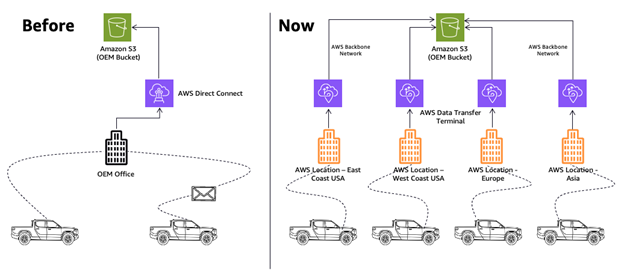How Rivian Uses AWS to Speed Up Autonomous Driving Development

Rivian has always been focused on improving the driving experience for its customers. One big part of that effort is constantly updating its vehicle software. The latest Gen 2 models are packed with high-tech hardware, including powerful cameras, radar, and machine learning systems. But to make its autonomy features even better, Rivian needs to process an enormous amount of data collected from its test fleet every day.
These test vehicles gather terabytes of data from cameras, sensors, and GPS. That data is essential for training Rivian’s advanced driver assistance systems, helping improve safety and performance. The problem? Uploading and processing that much data quickly and efficiently is a huge challenge. Traditional methods, like returning vehicles to a central hub or shipping hard drives, take too much time and effort.

To fix this, Rivian turned to AWS and its new Data Transfer Terminal service. This setup lets Rivian vehicles offload massive amounts of data at high-speed upload locations instead of relying on slower, more complicated transfer methods.
AWS also gives Rivian more flexibility. Instead of needing a dedicated, expensive network connection, Rivian can use these terminals on an as-needed basis, paying only for the time they use. This makes it easier to expand data collection efforts without worrying about complex infrastructure.
Switching to AWS Data Transfer Terminal has been a game changer for Rivian. By streamlining how data is collected, uploaded, and processed, the company can focus on improving autonomous driving capabilities instead of dealing with technical bottlenecks. With faster data access, Rivian’s team can push out updates and improvements quicker, making their vehicles smarter and safer.
All of this proves how valuable it is for Rivian to have Amazon as a partner especially as they look to launch hands-free driving by the end of 2025.
